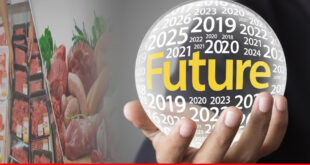Serving approximately 68 million customers globally, McDonald’s is the world’s largest chain of hamburger fast food restaurants with over 30,000 outlets worldwide. McDonald’s has some phenomenal systems in place, developed and proven by the input of billions of dollars and hundreds of thousands of man-hours worth of research.
In 1980s, various firms enlarged into global operations by franchise mode of business. Though these firms wanted to stick to their original knitting, they had to attune themselves to regional preferences. So the McDonald’s taking best use of services both in rural and urban sites.
During 2012, the company had yearly revenues of $27.5 billion and profits of $5.5 billion. During 2012 it was also recorded that McDonald’s is the world’s second largest private employer with 1.9 million employees, 1.5 million of whom work for franchises.
McDonald’s basically sells breakfast items, cheeseburgers, soft drinks, chicken, French fries, hamburgers, milkshakes, and desserts and in response to altering consumer tastes, the management has enlarged its menu to include wraps, smoothies, salads, fish, fruit, and seasoned fries.
System of operation
McDonald’s worldwide system is composed of both company-owned and franchised restaurants. The company franchised restaurants are owned and operated under one of the structure such as conventional franchise, developmental license or affiliate.
The optimal ownership structure for an individual restaurant, trading region or market (country) is based on a variety of factors, counting the accessibility of individuals with the financial resources and entrepreneurial experience also the local legal and regulatory environment in critical regions like property ownership and franchising. The business relationship between the company and its independent franchisees is of fundamental significance to overall presentation and to the McDonald’s brand.
The management views itself mainly as a franchiser, with the huge majority of Mcdonald’s restaurants (around 80 per cent) owned and operated through independent franchisees.
Franchising enables an individual to own a restaurant business and sustain control over personnel, purchasing, pricing decisions and marketing, while also benefiting from the strength of the company’s global brand, financial resources and operating system. One of the strengths of this model is that the expertise gained from operating company-owned restaurants permits the company to enhance the success and operations of all restaurants while innovations from franchisees can be examined and, when viable, professionally implemented across pertinent restaurants.
McDonald’s restaurants share considerably to their ability to act as a believable franchisor. Having company-owned restaurants is necessary in giving company personnel with a venue for restaurant operations training experience. In addition, in company-owned and operated restaurants, and in collaboration with franchisees, the management is able to more develop and refine operating standards, marketing concepts and product and pricing policies that would ultimately advantage pertinent McDonald’s restaurants.
Under a conventional franchise contract, McDonald’s owns the building and land or secures a long-term lease for the restaurant place and the franchisee pays for equipment, signs, décor and seating. The management hopes that ownership of real estate, combined with the co-investment through franchisees, enables them to attain restaurant presentation levels that are among the uppermost in the industry. Franchisees are also accountable for reinvesting capital in their businesses over time. In addition, to accelerate implementation of certain measures, McDonald’s regularly co-invests with franchisees to finance developments to their restaurants or their operating systems. These investments, developed with input from McDonald’s with the aim of enhancing domestic business presentation, raise the value of their brand by the development of modernized, further attractive and greater revenue generating restaurants. Mcdonald’s typical franchise term is 20 years.
Furthermore, the business relationship with franchisees is planned to promise consistency and high quality at all McDonald’s restaurants. Conventional franchisees share to McDonald’s revenue by the payment of rent and royalties based upon a percent of sale, with specified minimum rent payments, along with initial fees paid upon the opening of a fresh restaurant or grant of a fresh franchise. This structure enables the company to generate important levels of cash flow.
Under a developmental license contract, licensees give capital for the overall business, counting the real estate interest. The management does not spend any capital under this contract. The company achieves a royalty based upon percent also initial fees upon the starting of a fresh restaurant or grant of a fresh license.
The management utilizes the developmental license ownership procedure in over 70 states with a total of 5,228 restaurants. The main developmental license operates around 2,100 restaurants in 19 states in Latin America and the Caribbean. McDonald’s also has an equity investment in a limited number of overseas affiliated markets, referred to as affiliates. In these markets, McDonald’s gets a royalty based on a per cent of sales and records its share of net consequences in equity earnings of unconsolidated affiliates. It was recorded that the main of these affiliates is Japan, where there are almost 3,100 restaurants.
McDonald’s operations in Pakistan are no dissimilar to this theory, but they negated the traditional marketing philosophy of rule of cumulative attraction through locating their outlets where their customer section is in dense concentration. The company defied the rule of cumulative attraction and affluent segment being the trend-setters by initially locating their outlets in Lahore, Gulberg and Nazimabad, Karachi instead of Boating Basin where most restaurants were placed. It actually targets the middle class and working class in the locality of Nazimabad and Gulberg first.
 PAGE Blog Business Weekly Magazine
PAGE Blog Business Weekly Magazine

